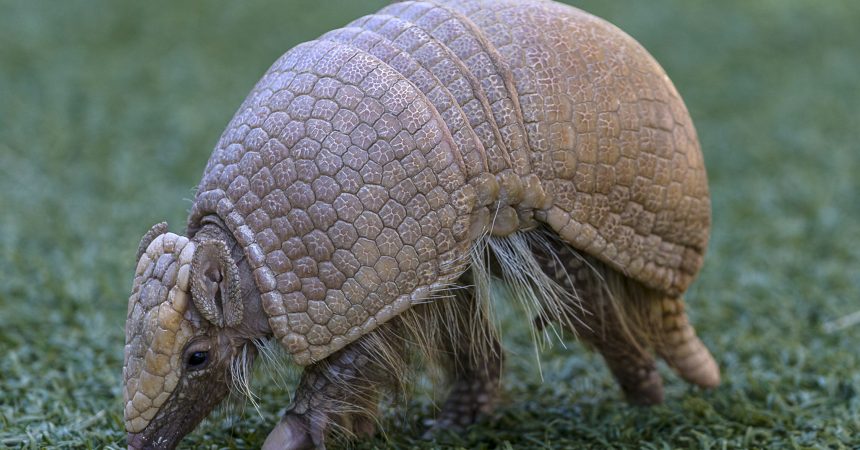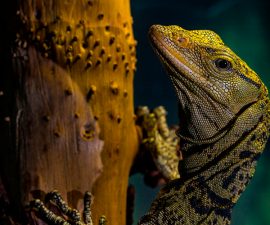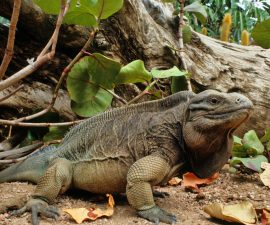Bands, stripes, eyes, or toes, these species can be counted on to share their physical characteristics in their name.
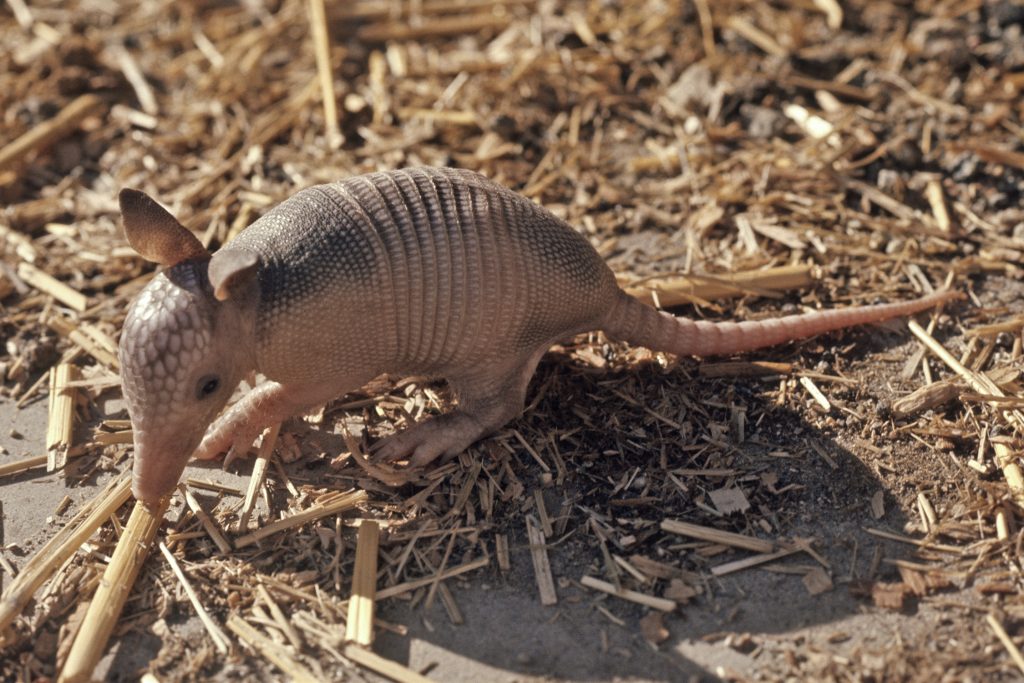
Nine-banded armadillo Dasypus novemcintus
Armadillo
No other species hogs numbers like the armadillos native to North and South America. Of the approximately 20 varieties of armadillo, the names of four of them bear numbers: Brazilian three-banded, six-banded, seven-banded, and, the only species found in the US, the nine-banded armadillo. No other mammal species has bony plates or “bands” that cover its back, head, legs, and tail. The word armadillo means “little armored one” in Spanish. Only the three-banded armadillo (pictured at the top of the page) can actually roll itself into an impenetrable ball; other species quickly dig and dive into a hole when threatened to protect the tender underbelly. In the 1930s, people who blamed President Herbert Hoover for the Great Depression called the nine-banded armadillo the “Hoover hog” and “poor man’s pork.” Also of note, the nine-banded variety has four identical pups of the same gender per litter. Armadillos can live for 15 years. They are related to anteaters and sloths.
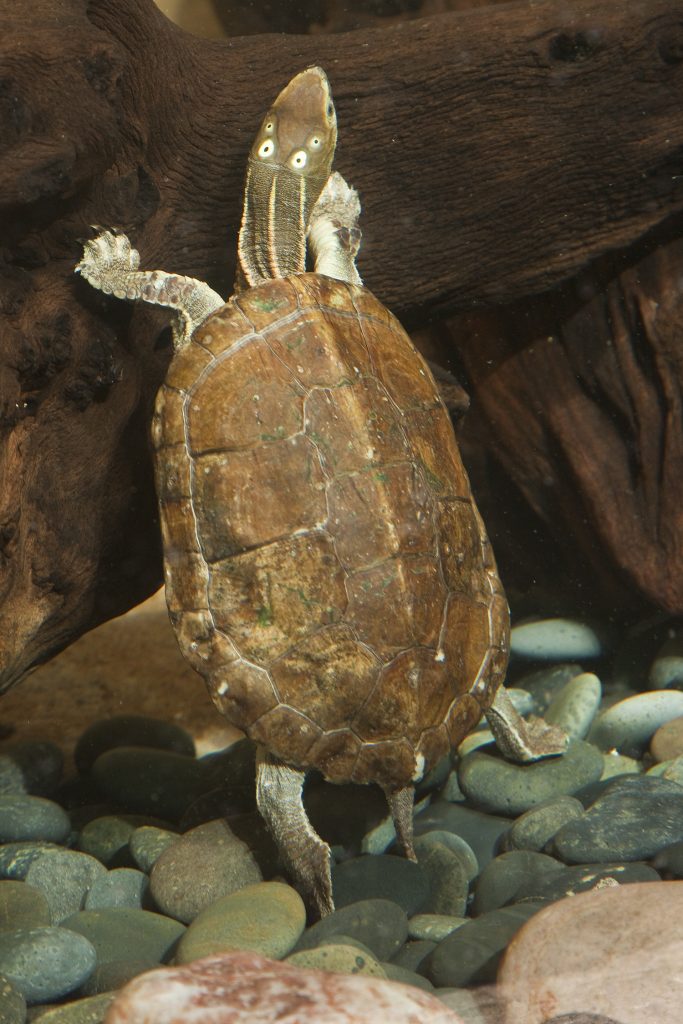
Four-eyed turtle Sacalia quadriocellata
Four-eyed turtle
Who are you calling four eyes? This nimble, six-inch turtle is one of three species in the Chinese four-eyed turtle genus Sacalia. Also called “false-eyed turtles,” they inhabit freshwater brooks and ponds in wooded, mountainous areas of China, Laos, and Vietnam. They feast on carrion, snails, beetle larvae, earthworms, aquatic plants, and various fruits. Despite their name, these turtles don’t actually have four eyes, nor do they wear spectacles. These endangered, semi-aquatic reptiles have eyespots called ocelli on the top of their head, which look much like an extra set of eyes. See?
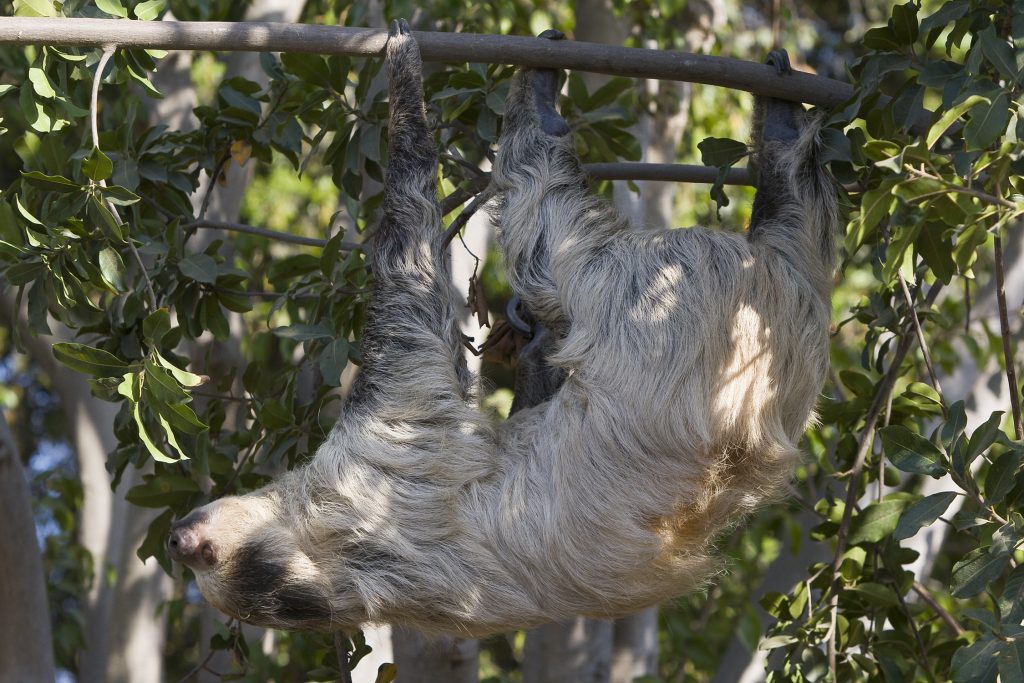
Two-toed sloth Choloepus sp.
Sloth
They might not win many races, but they are expertly camouflaged in the trees of Central and South America. About the size of a cocker spaniel, both the two-toed and three-toed sloths are masters of conserving energy. They maintain a low body temperature (86 to 93 degrees Fahrenheit) and sleep up to 18 hours a day, slowly digesting a diet of leaves and more leaves. They descend to the ground once a week to defecate. Its scientific name Bradypus is a Greek word for “slow feet.” While it may only move up to eight feet per minute on land, these animals are excellent swimmers, preferring the breaststroke. With about half the muscle mass of other mammals, it weighs less, which is helpful foraging for leaves high in the trees on narrow branches that other animals cannot access. Two-toed sloths have two toes (with formidable claws) on the front feet and three toes on the back feet. Three-toed sloths have three toes on their front and rear feet. During breeding season, females initiate “slo-mance” by shrieking in the nighttime forest to alert any interested males. If more than one suitor shows up, they slowly spar each other while hanging on by their rear legs. Winner takes all, and several months later, the female gives birth while upside down in the canopy to a single, clinging offspring.
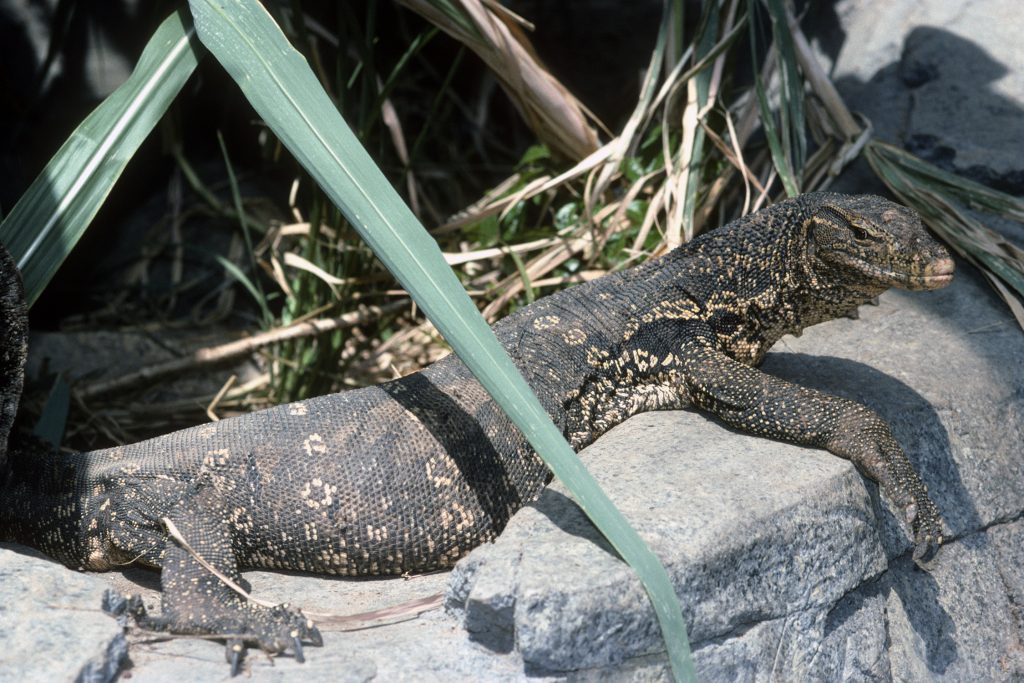
Two-banded monitor lizard Varanus salvator
Two-banded monitor lizard
This extreme carnivore is the second largest monitor lizard in the world, behind the mighty Komodo dragon. Reaching 5 feet in length and some clearing 80 pounds, two-banded monitor lizards are aggressive, solitary animals that hunt by day and recline in water or trees by night. The long and powerful tail is used as a rudder while swimming, a weapon when fighting, and a grasping limb when climbing. When a female seeks a place to dig a burrow to lay her eggs, her tail is carried high over her head. Conspecifics know to steer clear! Like snakes, monitors have a sensitive, forked tongue, which picks up scent chemicals and allows for better accuracy in locating prey. Powerful, hinged jaws enable them to eat prey whole or in large chunks. They stalk a broad range of animals across southern Asia including fish, crabs, birds and their eggs, turtles, rats, squirrels, and carrion. It also goes by the name Malayan water monitor and Asian monitor. Though non-venomous, this reptile’s saliva can cause a nasty infection in the blood stream.
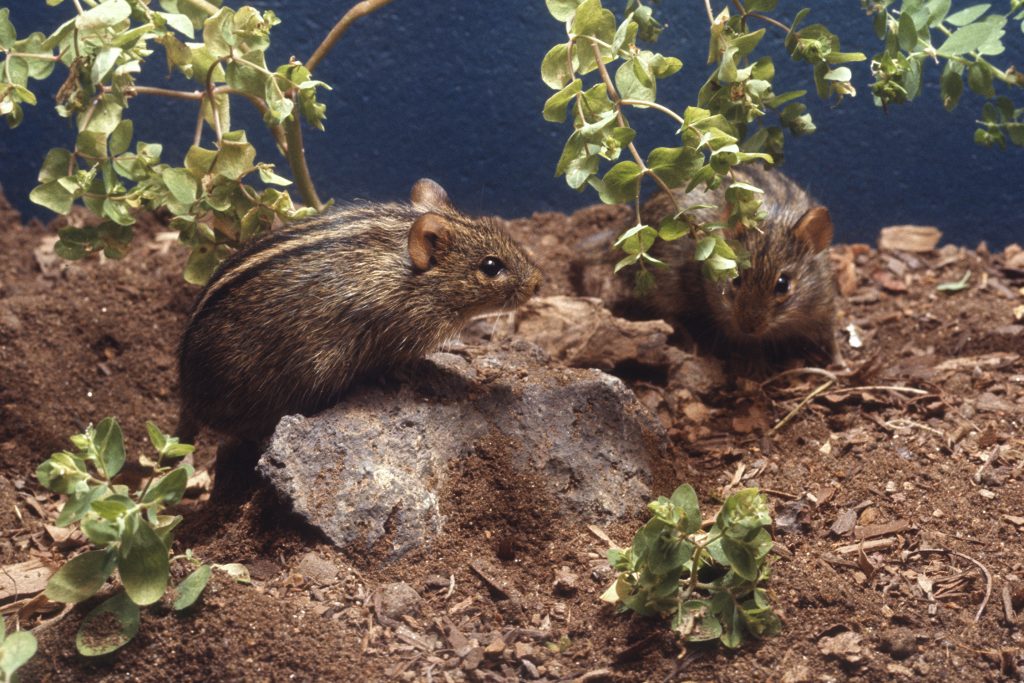
Four-striped grass mouse Rhabdomys pumilio
Four-striped grass mouse
Some say humans are the only mammal more abundant in southern Africa than this diminutive rodent. This darting diurnal creature is named for its four dark stripes running the length of its mouse-sized body. As an omnivore, this grass mouse is flexible in diet and habitat, occurring in six biotic zones, from desert fringe to high-rainfall mountain areas where grass is present. They are not afraid of people and can live around houses and agriculture areas. Following a 25-day gestation period, females have litters of 5 to 6 helpless little pups. Even at birth the young have four dark, pigmented stripes down their tiny back.
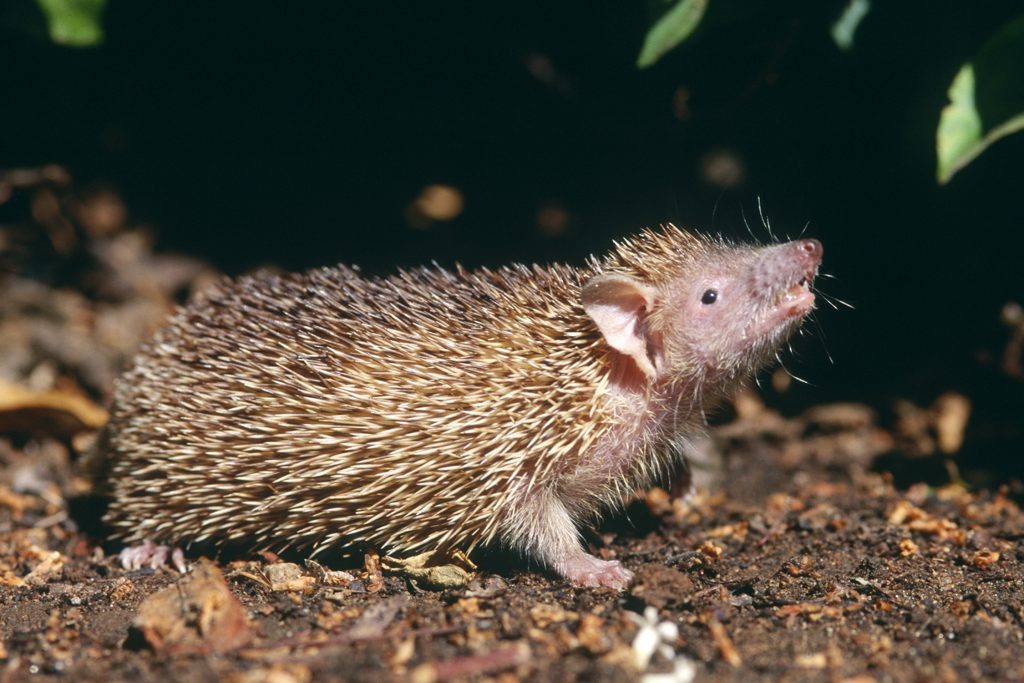
Small Madagascar tenrec Echinops telfairi
Tenrec
This prickly little mammal from Madagascar is definitely a 10 on the cute scale! While not related to hedgehogs, 2 of the 30 tenrec species have the word hedgehog in their name. Lesser hedgehog tenrecs are animal ambassadors at the Zoo and Safari Park and can be seen in special presentations and in some of the behind-the-scenes safaris. Roughly the size of a kitten, these spikey, nocturnal creatures sleep in tree hollows by day, making a cozy den, and forage by night, eating insects, small vertebrates, bird eggs, and occasionally fruit. Tenrecs hibernate during the chilly winter months to conserve energy, and many are dormant during hot weather.
Karyl Carmignani is a staff writer for San Diego Zoo Global. Read her previous piece, Diving into Conservation.

